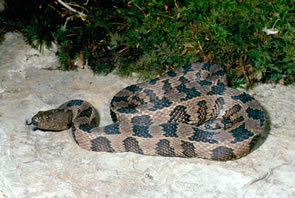
Nerodia Taxispilota
Photo by RW Van Devender
Description: The brown watersnake is a large snake with dark brown, squarish blotches running down the center of its lighter brown back. This species has alternating rows of square blotches that run along its sides, thus resulting in somewhat of a checkerboard appearance. The belly coloration is variable but is usually a mottled brown color. The eyes and nostrils are situated near the top of the head making it easier for this snake to breath and see at the water’s surface. These snakes are commonly found during the daytime basking on tree branches overhanging the water, into which they escape if disturbed. Unfortunately, this escape strategy may land a brown watersnake into the boat of an unsuspecting fisherman.
Feeding/Diet: The brown watersnake feeds primarily on catfish and is sometimes found with the spines of catfish sticking out its body walls. Surprisingly, the spines eventually fall out and the snakes seem to recover from these “painful” meals.
Habitat/Range: Brown watersnakes are primarily found in rivers or large streams in the Coastal Plain of North Carolina; however, they do extend into the Piedmont along large river systems.
Reproduction: This species breeds from April to May, and females give birth to 15–50 young during late summer or early fall.
Miscellaneous: Like most other watersnakes, brown watersnakes are often mistakenly identified as cottonmouths and killed. When captured, these snakes, like other watersnakes, will bite repeatedly and emit a nasty smelling musk from their anal glands. Female brown watersnakes grow longer and much heavier than males. Although nonvenomous, the bite of a large, female brown watersnake can be quite painful.
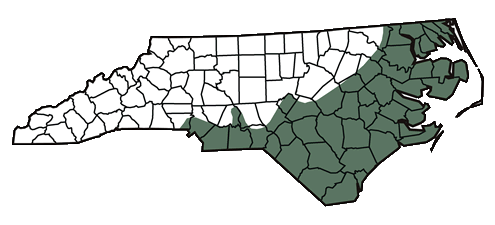
The shaded region represents the range of the brown watersnake in North Carolina.
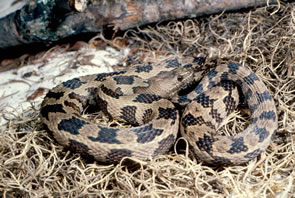
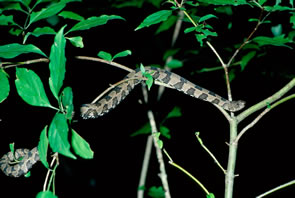
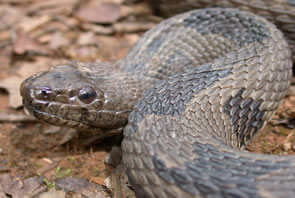
Brown watersnakes are commonly seen basking in vegetation overhanging the water.
Photo
by RW Van Devender
Photo by JD Willson
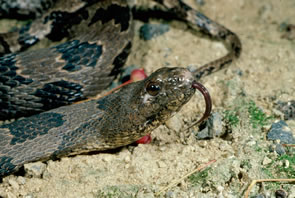
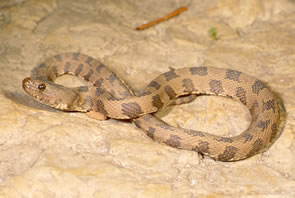
Photo by RW Van Devender
This website created by: J. Willson, Y. Kornilev, W. Anderson, G. Connette and E. Eskew.
For comments or questions contact M. Dorcas: midorcas@davidson.edu.
M. Dorcas homepage: http://bio.davidson.edu/dorcas
Davidson College, Davidson, North Carolina 28035-1719.
Text and maps from: Dorcas, M. E. 2004. A Guide to the Snakes of North Carolina. Davidson College - Herpetology Laboratory, Davidson, NC. – Copyright by Michael E. Dorcas.
Partial Funding for this website provided by a Associate Colleges of the South, National Science Foundation, and Duke Energy.
